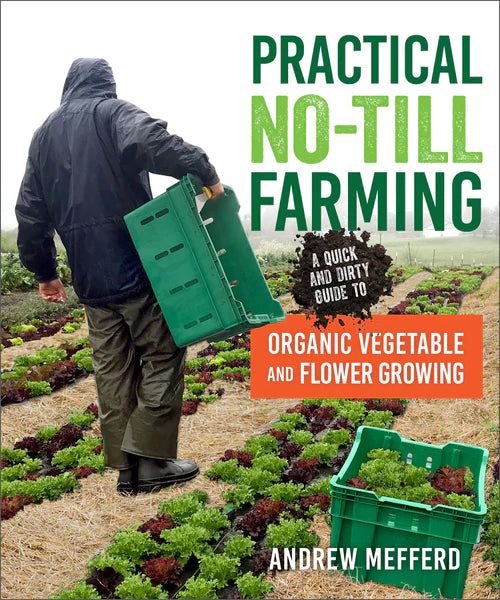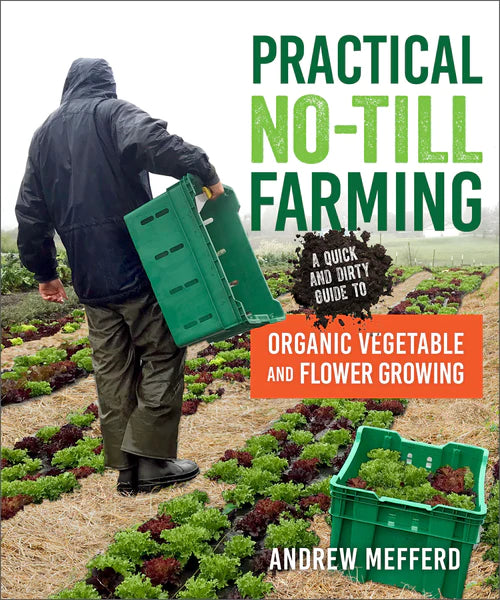Practical No-Till Farming
Practical No-Till Farming
Couldn't load pickup availability
A Quick and Dirty Guide to Organic Vegetable and Flower Growing
By Andrew Mefferd
No-till farming methods are taking small-scale farming by storm, promising less work, higher productivity, improved soil health, carbon sequestration, and weed control for organic growers.
Yet there are many ways to do no-till, including mulching with compost, cardboard, straw, silage tarps, and more. Plus plenty of conflicting advice on how to get started.
Practical No-Till Farming is here to help, sorting the wheat from the chaff and the horse manure from the plastic mulch. Coverage includes:
- How to assess your farm for no-till options considering climate, soil, and crop selection
- Assessment of common no-till methods, including pros and cons, materials, and the relative costs
- A decision-making matrix for choosing the most appropriate methods for your context
- How-to for each no-till method, including what to do and when
- Dealing with bindweed, symphylans, and other difficult weeds and pests
- Maximizing productivity of no-till beds
- Special coverage of both organic vegetable and flower no-till market farming
Ideal for small-scale growers everywhere, Andrew Mefferd, veteran farmer, author of The Organic No-Till Farming Revolution, and editor of Growing for Market magazine, brings you the ultimate guide to getting started with no-till farming.
Prefer a digital copy? Buy the E-Book
About the Author
Andrew Mefferd is the editor of Growing for Market magazine and author of The Organic No-Till Farming Revolution and The Greenhouse and Hoophouse Grower's Handbook. He spent seven years in the research department at Johnny's Selected Seeds and worked on farms across the US before starting his own farm in Cornville, Maine.

-
Shipping
Shipping costs vary based on location and method.
-
Returns
You have 30 days to return your unused product.

